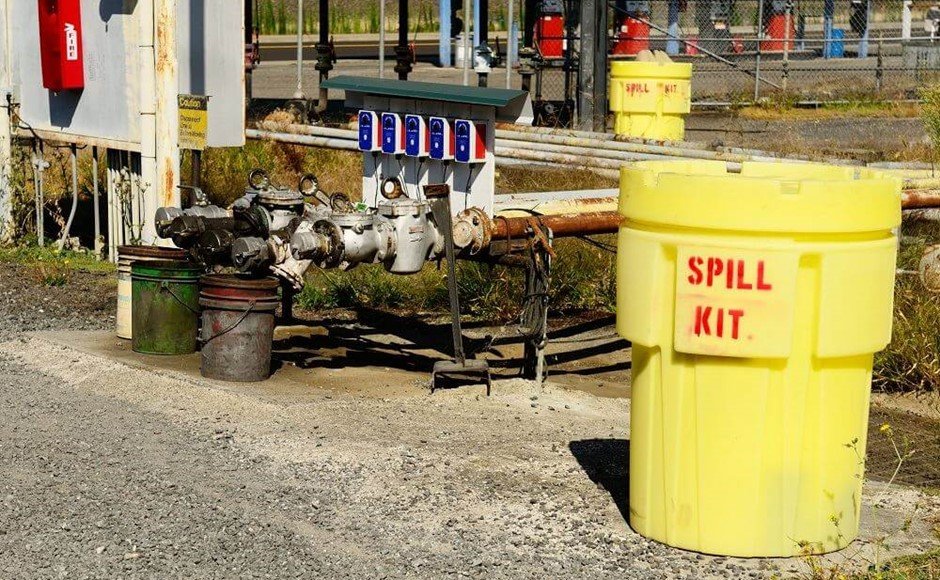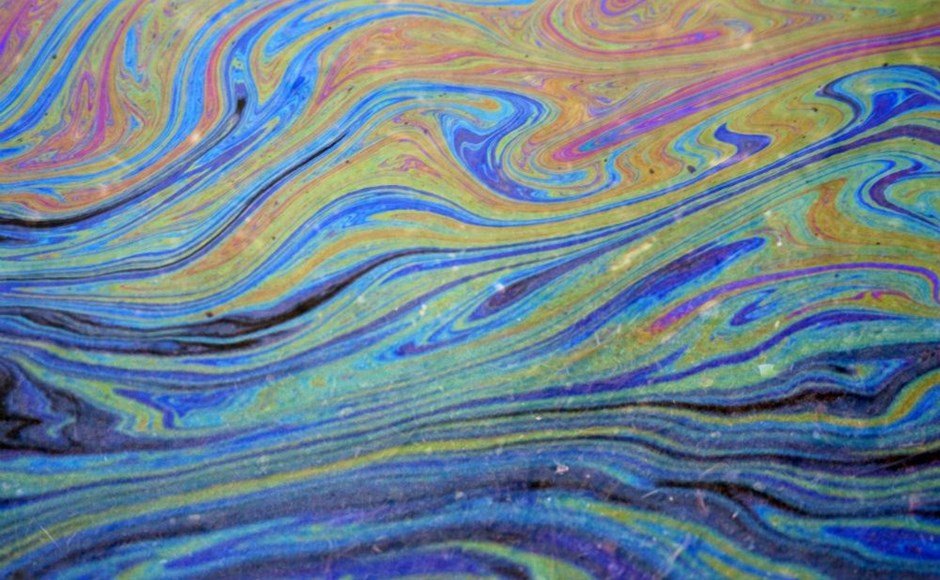Construction work activities resulted to different types of wastes such as Hazardous and Non hazardous wastes which require proper management Program to comply with Environmental legal requirements and Laws and avoid any undesired events affect negatively on Environment and work environment so that as initial step of Waste Management program we summarized here the first step of Management program which is waste analysis to be considered during construction work activities

WASTE ANALYSIS
Types of Waste
There are three general classifications of wastes, namely non-hazardous wastes, hazardous wastes, and inert construction wastes. A waste material, for the purposes of this section, is a non-gaseous material with no further primary use, which requires disposal.
Hazardous Wastes
Waste materials are classified as hazardous wastes when they exhibit one or more of the characteristics shown below or are hazardous by definition. The rules for handling hazardous materials may be different from the rules for handling a nonhazardous waste. Recycled hazardous materials and reused hazardous materials are not hazardous wastes because, by definition, they are not waste materials.
Hazardous Wastes exhibit one or more of the following characteristics, as defined.
- Explosive
- Flammable
- Spontaneous Combustion Potential
- Oxidizing Potential
- Toxic
- Corrosive
In addition to the above, certain wastes that do not exhibit any characteristics described above can be hazardous wastes by definition. Soil contaminated by spilled hydrocarbons is one such example; such soil is by definition a hazardous waste. Medical wastes, radioactive wastes, sewage sludge and empty chemical and oil containers are also, by definition, hazardous wastes. Oily waste and objects contaminated with oil such as oil filters are always a hazardous waste as they are combustible and such wastes include all fluids used for reducing friction in internal combustion engines, vehicles, rotating machinery, pumps, etc. Wood or cardboard crates or cartons that have been chemically treated are a hazardous waste by definition, if not by characteristic. Paint wastes including all types of industrial coatings and surface protective materials, which include oil-based and water-based paints, spent thinners, wood preservatives, their containers, and paint removers are hazardous by definition if not by characteristic. Paint or solvent contaminated rags, brushes and other related materials are also hazardous by definition if not
by characteristic.
A hazardous waste may be made non-hazardous by removal of the hazardous characteristic. Thus oily wastes may be made nonhazardous by incineration of the oil, providing, of course, the ash is non-hazardous. Wastes that have too high or too low a pH may be made non-hazardous by neutralization, if that is their only hazardous characteristic.
Non-Hazardous Wastes
Non-hazardous wastes are all wastes that are not hazardous wastes and are not inert construction wastes. This includes garbage, office wastes, construction wastes that are burnable such as boxes, and treated sewage effluent and sewage sludge.
Inert Construction Wastes
Inert construction wastes are wastes that are solid and on disposal in a landfill are not reasonably expected to undergo physical, chemical, or biological changes to such an extent as to produce substances that may cause an adverse effect. Such wastes include but are not limited to demolition debris, concrete, asphalt, glass, ceramic materials, unpainted scrap metal, and dry timber or wood that has not been chemically treated, but does not include hazardous wastes. Note that hazardous or non-hazardous wastes, herein, cannot contaminate the scrap metal and other wastes defined. Wastes contaminated with hazardous substances are hazardous by definition.
Waste Identification and Categorization
The following provides a brief description of the waste types typically expected as a part of this project and the waste categorization and selected disposal option for each waste. A complete list of the specific
wastes anticipated for construction projects are included in – Tables
1, 2, and 3. below



Oily Waste
Oily waste shall be collected in properly marked drums and transported to an appropriate treatment/disposal facility.
Paint Waste
Paint containers may be incinerated, recycled or cleaned by washing (using an approved specialist and recycled or sent to the landfill).
Cement and Concrete Waste
This type of waste includes cement-contaminated soils, as well as other cement and concrete wastes generated during construction. Using it in other work locations or returning unused cement to the vendor can minimize the volume of waste. Waste concrete can be crushed and used as road material or fill, or buried in a separate landfill site. Soils contaminated by cement can also be used as landfill cover.
Vegetation Debris
Vegetation debris with little or no commercial value will be:
• Chipped (in the case of small trees and brush) and used as a soil additive or bulking agent for land treatment or composting, or spread over areas to be reclaimed.
Scrap Metals
Scrap metal should be sold for recycling, if possible. If reuse or recycling is not possible, the scrap metal will be buried in a suitable landfill. Scrap metal that has been painted shall be incinerated, then landfilled.
Wood Waste, Pallets and Packaging Materials
This category includes small scrap wood, plywood and wood shavings, cartons, planks, thick cardboard, damaged cable drums, wooden crates, polyurethane, pallets and waste materials generated in the carpentry workshops. These materials may be incinerated and/or landfilled.
Glass
Broken glass, glass, which cannot be reused at the job site and glass fiber, will be collected in a container painted BLUE and recycled to glass manufacturers. If the glass has been contaminated by food or other materials and not cleaned, it shall be incinerated and either disposed in the landfill or recycled.
Bulbs
Fluorescent, high intensity (mercury) bulbs and u-tubes shall be packaged as hazardous waste. They shall be placed, unbroken in sturdy boxes and removed offsite by the waste transporter.
Plastics
Plastic waste includes polyethylene bags, plastic scraps, plastic bottles, etc. This waste material will be collected in a container painted BROWN and transported for disposal by incineration or recycled after compaction.
Plastic that has been contaminated by food or other materials and not cleaned shall not be recycled, but shall be treated as an incinerable waste.
Grit Blasting Waste
Waste generated during pressurized grit blasting work on pipes and steel plates, etc. The spent grit will be collected in the most effective manner as grit or sand particles. If the grit blasting waste has been contaminated with paint or non-metallic materials, it shall be handled as a hazardous waste. If not, it can be reused for filling of land depressions or buried in the landfill.
Batteries
Contractor will attempt to recycle waste batteries. Batteries include lead acid batteries, nickel-cadmium batteries, and zinc-carbon batteries. All batteries are a hazardous waste if not recycled. If the vendor will not take back the batteries, and there are no local recycling facilities, then the batteries will be stabilized and stored then disposed of in an approved waste landfill without incineration. The storage facility will have a dedicated container providing safe and secure storage to prevent site contamination.
Tires
There are normally opportunities to recycle tires. For example, they can be ground and used in asphalt paving materials. They can be cut up and used as shoes or sandals. However, if no such opportunities exist, the tires will be incinerated and buried in a landfill.
Domestic Waste
Domestic waste is divided into two categories: wastewater and refuse.
Wastewater
Wastewater is the liquid sanitary waste that has been fouled by a variety of uses in and around the construction camps. Wastewater originates from kitchen and laundry washings, and discharges from washbasins, bathrooms, toilets, etc.
The waste will be chemically treated to render it acceptable for discharge. Chemical toilets will be used for construction camps and at remote sites (pipeline worksites & flow stations).
Sanitary wastes generated within compounds will be diverted through the sanitary sewer and drains to approved waste disposal facilities.
Refuse
This consists of materials such as garbage, ashes, litter, grass, wastepaper and spoiled or leftover foodstuffs. This waste shall be collected in designated and labeled closed containers painted GREEN. Refuse will be collected and disposed of daily, in order not to attract predators and scavengers. All components of this domestic waste shall be sorted at source and the recyclable, nonbiodegradable items shall be separated. Hazardous materials and wastes shall not be disposed of with this waste.
Recycling and/or reuse may minimize the volume of wastes to be disposed of. All refuse wastes not recycled or reused, including non-burnable wastes, shall be sent to an approved landfill.
Start-Up Wastes
Start-up wastes, including oil contaminated soils, fuel oil and lube oil filter sludge and wastes, slop oil and tank bottoms are hazardous wastes by definition and require incineration and landfilling of the incinerator ash.
Used Solvents
Contractor will minimize the volume of solvent waste, as far as possible, by reusing solvents or returning them to the supplier. All remaining solvents will be placed into labeled drums and transported off site by the approved waste transporter company.
Note: Solvents will not be drained onto the ground or buried. Solvent spills to the ground are to be remediated immediately.
Drums, Barrels, and Containers
Drums, barrels and containers may be disposed of by returning them to the vendor for recycling, or by crushing them, incinerating them, and burying them in a landfill after incineration. Drums, barrels or containers that have been in contact with organic liquids or toxic chemicals will be emptied, crushed, incinerated and buried in a landfill.
Hydro-test Fluids
Where chemicals are added to hydro-test fluids, Contractor will minimize the amount of waste reusing the fluid when possible. The SDS of all such additives and fluids shall be examined to determine the proper classification of the waste fluids. Surface discharge of the fluids will be acceptable if the constituents meet the criteria for non-hazardous wastes, and cause no detrimental effect on surface water resources or ground water. This discharge will be carried out in such a way as to prevent erosion and minimize impacts on vegetation.
Radioactive Waste
Any radioactive source used for NDT of piping work will be returned to the supplier in the original screened container at the end of its useful half-life for disposal. Such sources will be stored in safe, secure X-ray source pits with appropriate warning signs.
Other Wastes
All other wastes shall have their classification determined in accordance with the definitions given in this document and shall be disposed of accordingly. If there is any doubt concerning which classification a waste falls under, then the Contractor HSE Manager shall make the determination.



